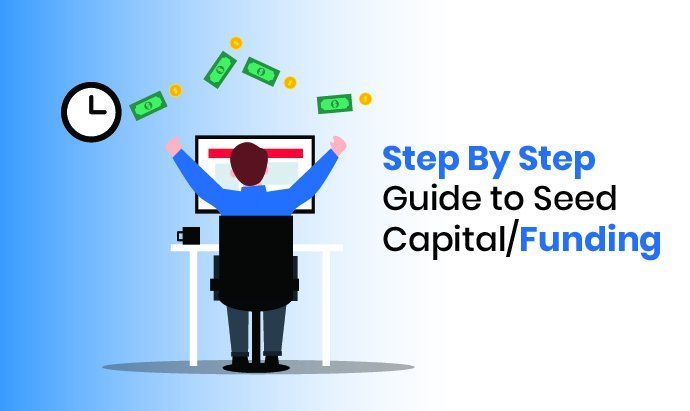
TABLE OF CONTENTS
Equipment must be purchased, offices must be rented, and employees must be hired. More significantly, they must expand. To execute these tasks, companies will almost always need outside cash.
Seed money is a term many professionals use to describe a company's first round of funding. This quick guide summarizes everything startup founders need to know about raising the seed money for their business.
Why Raise Seed Funding?

The great majority of startups will fail if they do not receive startup funding. The amount of money required to bring a firm to profitability is typically far beyond the founders' financial capabilities. A startup is a firm which focuses mainly to grow quickly 12. Prior to establishing profitability, high-growth organizations nearly always need to burn capital to maintain their growth.
Only a few startup enterprises succeed in bootstrapping (self-funding), but they are the exception. Of course, there are many excellent businesses that are not startups.
A war chest not only allows companies to survive and develop, but it is nearly always a competitive advantage in all areas. These areas include employing key personnel, public relations, marketing, and sales. As a result, most businesses will almost definitely seek funding.
When’s The Right Time to Raise Seed Funding?

Investors write checks when they find a fascinating idea, are certain that the founders' vision can be realized. The realization should be regarding the opportunity indicated is real and significant enough. When the founders are ready to share their tale, they will be able to raise funds. And, in most cases, you should generate funds whenever possible.
For some entrepreneurs, having a story and a reputation is enough. For the most part, though, it will take an idea, a product, and some level of client uptake, often known as traction. Fortunately, today's software development ecosystem allows for the rapid development and delivery of a complex web or mobile product at a relatively low cost. Even there are prototypes available of the hardware quickly.
However, investors must be persuaded as well. A product that they can see, use, or touch is usually insufficient. They'll want to know if there's a product-market fit and if the product is actually growing.
How Much You Should Raise Seed Funding?

In an ideal world, you should raise as much money as you need to reach profitability and then stop raising money. If you succeed, you will not only be able to raise money in the future, but you will also be able to survive without new funds if the financial situation becomes tight.
However, other firms, such as those developing hardware, will require a follow-on round. Their goal should be to gather as much money as possible in order to reach their next "fundable" milestone, which is normally 12 to 18 months out.
When deciding how much to rise, you must weigh numerous factors, including the amount of advancement that money will buy, investor credibility, and dilution. If you can give up as little as 10% of your firm in your seed round, that is fantastic. But, most rounds will require up to 20% dilution, and you should attempt to avoid giving up more than 25%. In any case, the amount you're requesting must be backed up by a credible plan.
Final Thoughts
The destiny of your company is determined by how you want it to be and how quickly it grows. With all of this in place, you should be able to find the ideal investors to support your company, continue forward with seed money, and eventually become a global success.










let’s get started!
Get in touch today. We’re ready!
